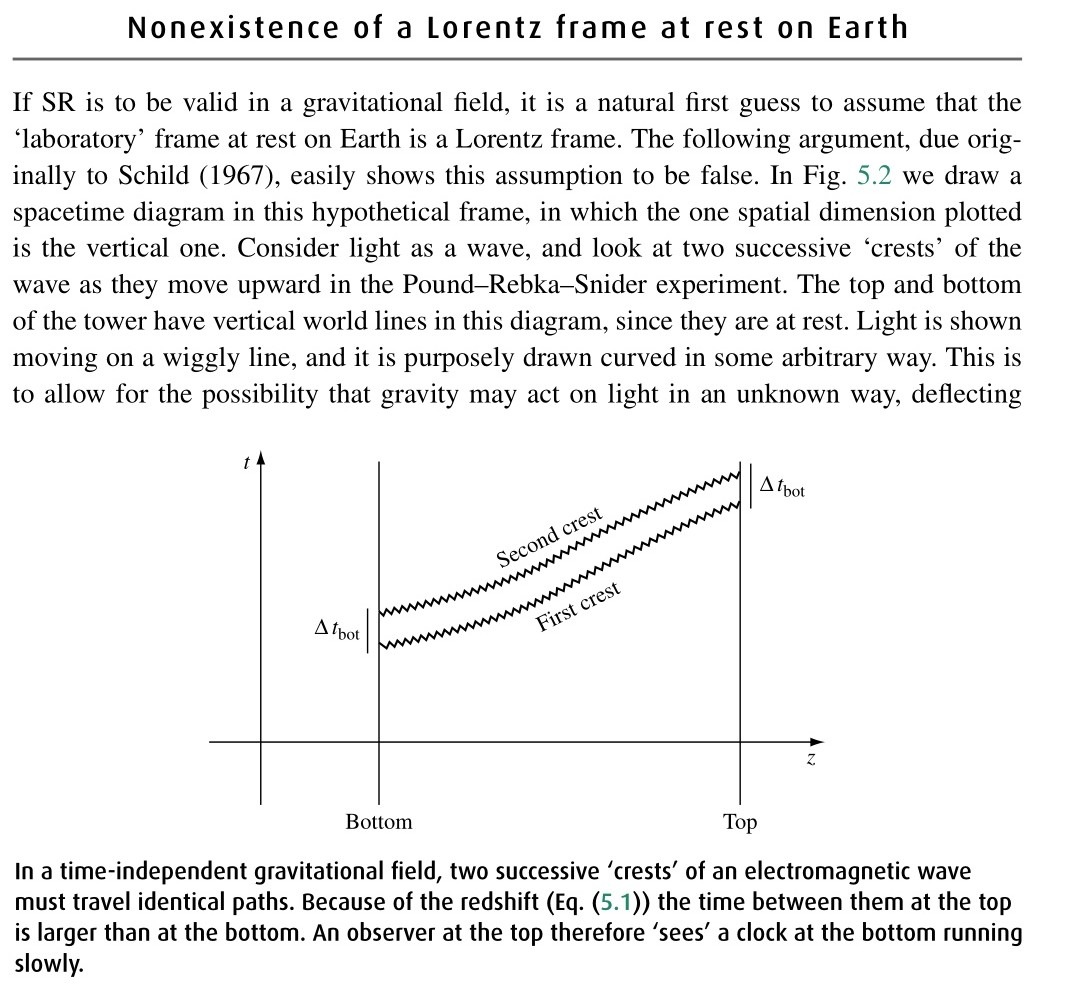Salut,
Comment cela se fait-il que dans son livre "A first course in general relativity", au chapitre 5 (preface to Curvature), pour illustrer l'argument de Schild, Schutz ait pu dessiner des world line (désolé, je me souviens plus de l’appellation en français) courbés pour les photons? Un extrait du livre sur Google books
Cela ne viole-t-il pas le postulat qui veut que la vitesse de la lumière soit la même dans tous les référentiels (ce qui veut dire, d'après ce que j'ai compris, que v = c = 1 et donc que les world line d'un photon devrait toujours avoir une pente 1 dans le diagramme d'espace temps, ce qui n'est plus le cas, ou du moins, me semble ne plus être le cas si on trace des lignes courbées comme il l'a fait dans son illustration)?
Intrigué par ça, j'ai essayé de trouver une autre description de l'argument et j'ai trouvé ça sur einstein.stanford.edu:
Ici, ils parlent de diagonal (donc, je suppose, de lignes droites), ce qui correspond à ce que j'ai compris des explications de Schutz, indépendamment de l'illustration qu'il a utilisé.To see why this is such a pivotal experiment for general relativity, consider the following simplified experiment. Imagine two experimenters, Thelma and Louise, where Thelma is standing on the ground and Louise is on top of a tall step ladder. Thelma sends exactly 10 cycles of yellow light to Louise, who then waits until her equipment has registered all 10 beats of the light. Because the light signal Louise received has lost some energy climbing up the earth's gravity well to the top of the ladder, it has been red shifted to a lower frequency. Louise has to wait longer than it took Thelma to send all ten beats of the light signal in the first place. The reason that this experiment contradicts special relativity is because, first of all, both Thelma and Louise are at rest relative to each other. They are moving with exactly zero velocity with respect to each other. This means that they share exactly the same reference frame in special relativity. But, this necessarily means that a single, flat space-time patch should be exactly sufficient upon which to describe both their world lines, and those of the wavelets in the light ray they exchanged. Their world lines should form the opposite sides of a rectangle in which the light ray forms the diagonal. By a simple geometric construction, however, we see that this cannot occur because the light wavelets take longer to receive than to send. This can only be accommodated if the space-time patch is not flat, thereby showing that the gravitational redshift demands space-time curvature. This is a direct deduction from observation, and is the essential underpinning of the entire rubric of curved space-time.
Mais j'aimerais comprendre comment c'est possible de dessiner une world line courbée pour un photon comme il l'a fait dans son livre et donc, ce que je n'ai pas bien saisi.
Merci d'avance.
-----




